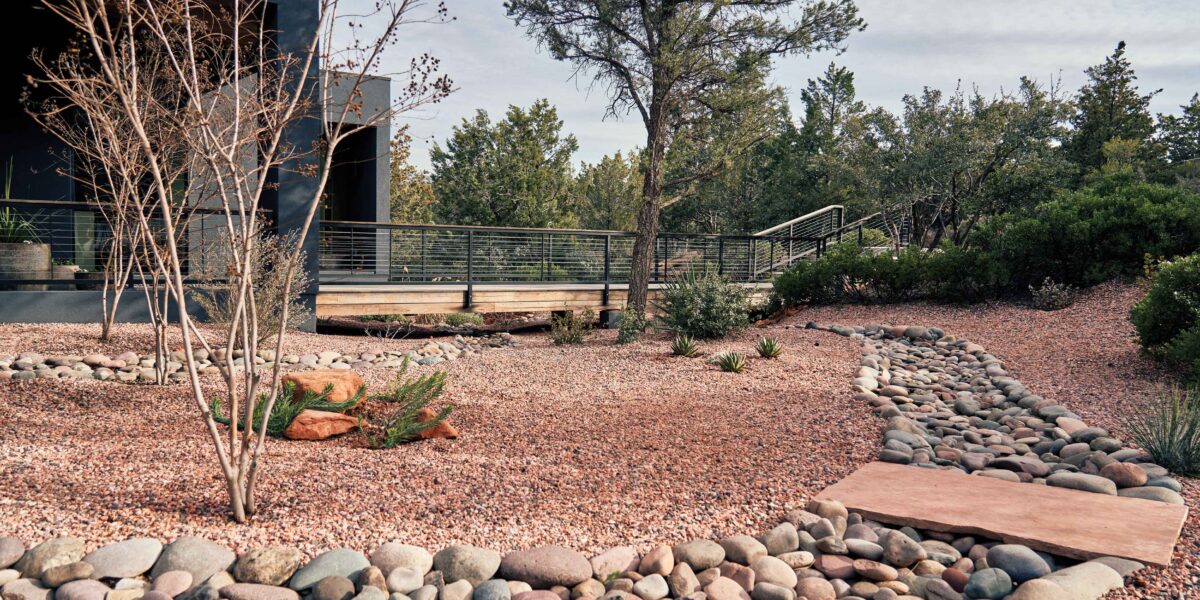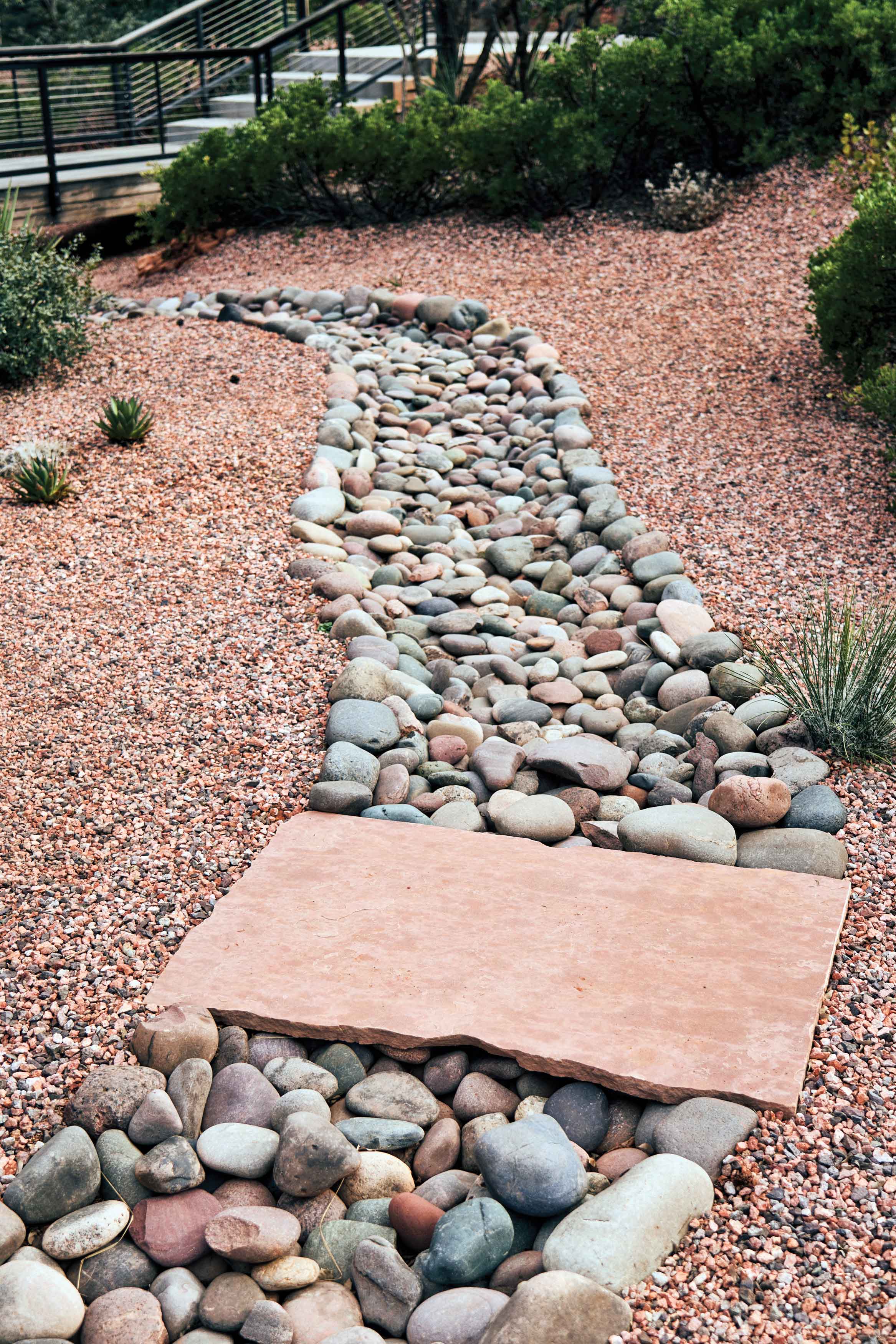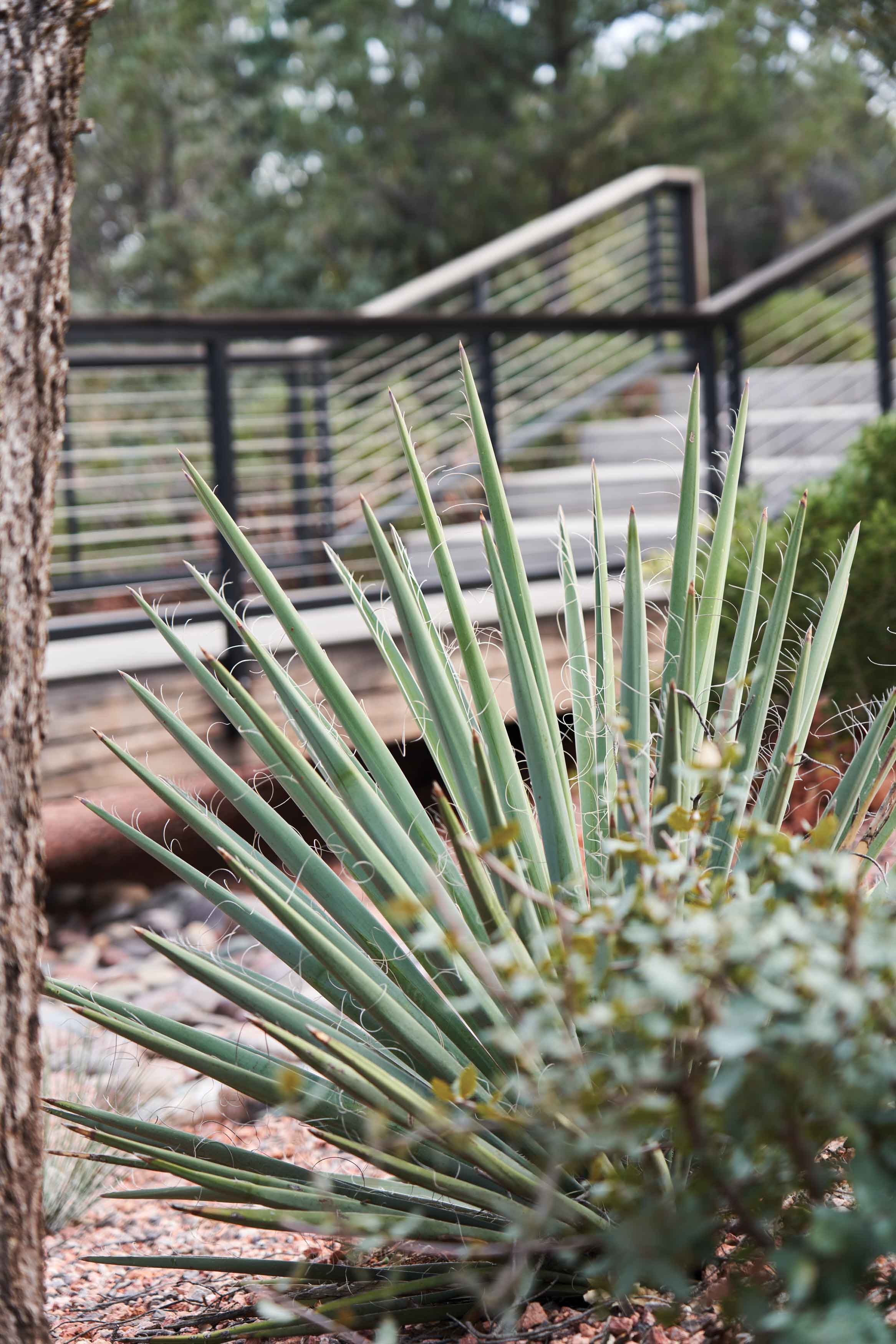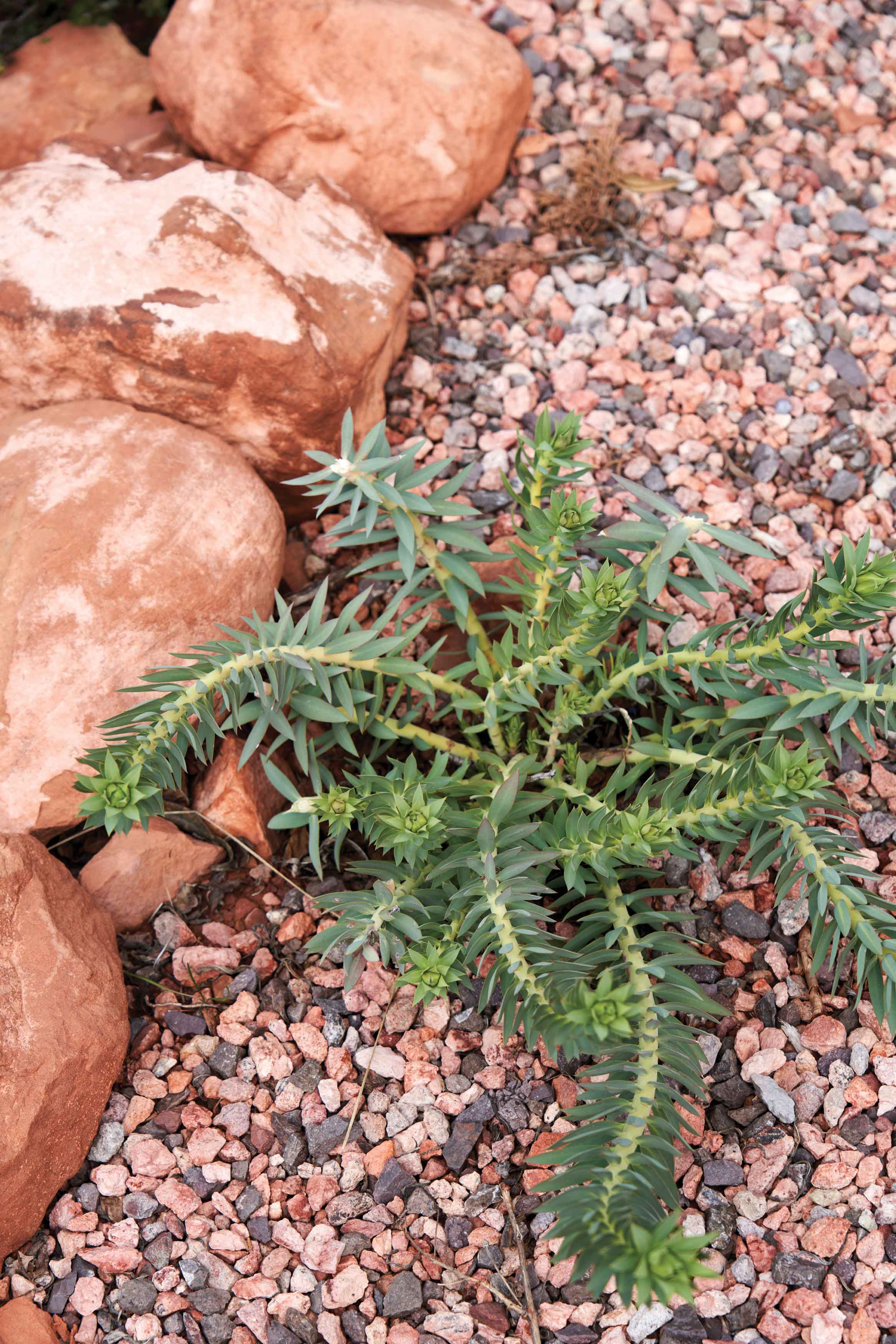
How to Design Your Garden to Handle Extreme Weather
A landscape designer shares his key tips.

Feeling inspired to wrangle the weather through intentional design choices? Landscape designer Colin Cleland breaks down the key considerations when creating a garden rooted in resilience.
1. Don’t Call It a Rain Garden

Thomas J. Story
No matter where you live, any chance to capture water within a landscape is incredibly important to the ecosystem. Cleland points out that “a monsoon garden is really a broader response to regional needs, whereas a rain garden is usually a localized solution to an individual property.” Monsoon gardens are intended to respond to a substantial amount of rainfall and flooding and to account for extremes in the climate to avoid inundating the infrastructure of a community. For this Sedona house, the intent was to retain water on the property and not overwhelm the arroyo behind it.
2. Take Notes from Nature

Thomas J. Story
For this particular project, Cleland’s team benefited from it being a new construction and did not inherit any poor drainage planning. If you’re working with a site that has existed uninterrupted for many years, respect how it drained naturally throughout that period and take cues for any additional infrastructure. Cleland encourages you “to not just think ‘How do we get water off of the property?’ but ‘How and why is water coming onto it, and what is my responsibility to the water once it comes to my site?’” He adds: “A holistic approach includes understanding the appropriate rock and ground cover, the plants themselves, and the functioning of what the house is doing all at the same time. When functioning in unison, it can be a very rewarding process.”
3. Funnel the Flooding

Thomas J. Story
When dealing with sudden submersion, it’s important to plan ahead on how moisture will move throughout the property. Here Cleland provides three key questions to ask yourself when planning on adding additional support and preparing the landscape for monsoons.
Where Is Water Going to Be Coming from, and What Is It First Interacting with on-Site?
The first line of defense is what is used on the ground. The majority of the Sedona property is covered in small-diameter rock cover, so a pink tone material was chosen to specifically celebrate the beauty of the surrounding Red Rock Mountains. This material choice allows for drainage without fighting against the land, while also allowing water to flow through to its final destination.
Once Water Meets the Ground, Where Does It Go, and How Does It Get There?
With monsoons, it’s imperative to avoid extensive erosion of the landscaping and around the building foundation. Cleland incorporated a 60-foot-long bridge into the design in order to avoid interrupting these channels. “When water is coming from the house’s overflow scuppers,” he notes, “we built in rock ‘splash pads’ at these locations to essentially break the fall of the water coming down.” These areas will be the first to show signs of erosion and failure, leaning into those needs with the opportunity for design aesthetics. For the Sedona house, they chose large-diameter, gray river rock as a way to functionally perform and create a contrasting tone to the surrounding pink rock cover.
How Does Water Stay and Then Eventually Leave the Site?
Cleland suggests thinking of this as a temporary water feature, where water is allowed to stay on-site while slowing the flow into other areas. Consider a retention pond, which is completely lined with a drainage mat and covered over with larger stones. The drainage mat avoids long-term degradation of the pond while providing the resiliency needed to withstand extreme conditions. Retaining water for a longer period on-site also allows plants and trees to thrive through deep watering.
4. Plants That Persevere

Thomas J. Story
When looking for plants that will assist in creating resiliency and longevity, it’s most important to understand the region you’re working in. For the Sedona project, Cleland’s team kept as many of the existing shrubs and trees as possible: beautiful Arizona cypresses, manzanita, scrub oak, and piñon pines. Keeping and favoring native plants is imperative to creating a resilient and long-lived landscape.

Thomas J. Story

Thomas J. Story
If you need to add new plant materials on-site, consider like-minded shrubs and trees that help absorb water along the rock channels and retention ponds on the property. Cleland worked with Anderson Landscaping to add more than a dozen ‘Blue Ice’ Arizona cypresses, desert willows, manzanita ‘Dr Hurd’, mountain mahogany, pink and white oleanders, and New Mexican desert olive in addition to three purpleleaf plum trees. These plants now offer seasonal color and architectural interest with a natural, relaxed beauty that complements the modern home’s design.
5. Mindful Maintenance

Thomas J. Story
Cleland recommends people “evolve with the property and not put themselves in a situation where they’re working against the land.” Most important, monitor your system after a significant rain event to determine if there are weak spots. By identifying any needs for additional rocks or soil to create high spots, or additional channels created to reorient a more natural flow of water, the land will tell you when something is not working.
